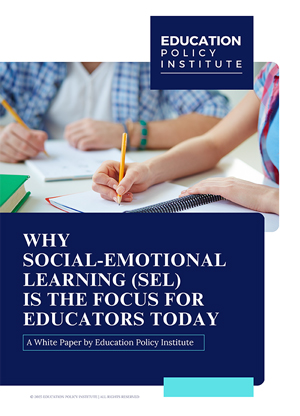Higher education is undergoing a significant transformation as institutions worldwide confront a convergence of complex challenges. Once viewed as stable pathways to success, colleges and universities now grapple with declining enrollment, rising tuition costs, and increasing student debt. The emergence of faster, more affordable alternatives to traditional degrees, such as online courses and industry credentials, has forced universities to prove their relevance and value more clearly. Financial pressures have mounted, pushing some institutions to closure while others struggle with overcapacity and outdated infrastructures. Meanwhile, faculty burnout, mental health concerns among students, and political interference are undermining both academic quality and institutional autonomy.
These challenges are not isolated—they intersect and intensify each other, making the need for adaptation more urgent than ever. Today’s students demand more than lectures and credentials; they seek flexibility, transparency, real-world readiness, and emotional support. At the same time, institutions must modernize curricula, address operational inefficiencies, and find innovative ways to remain competitive and sustainable in a volatile educational ecosystem. While the path forward is not easy, universities that embrace change with creativity and responsiveness are more likely to thrive in this shifting landscape rather than merely endure.
The Multifaceted Challenges Confronting Higher Education Today
Higher education institutions today are navigating a complex landscape marked by financial instability, evolving student expectations, and rapid technological advancements. Drawing insights from recent analyses, here is a comprehensive overview of the primary challenges confronting universities:

-
1. Financial Instability and Funding Reductions
Universities are grappling with diminishing public funding, leading to budgetary constraints that affect research initiatives, faculty recruitment, and infrastructure maintenance. This financial strain is prompting institutions to seek diversified revenue streams, including industry partnerships and alumni contributions, to sustain operations and uphold educational quality. -
2. Declining Enrollment and Institutional Viability
Rising tuition costs and the emergence of alternative education pathways, such as online courses and vocational training, have contributed to a decrease in traditional college enrollments. This trend threatens the viability of smaller institutions, necessitating the adoption of flexible learning models and enhanced career services to attract and retain students. -
3. Curriculum Relevance and Adaptability
The rapid evolution of the job market demands that academic curricula remain current and aligned with industry needs. However, bureaucratic hurdles and resistance to change often impede timely curriculum updates, potentially leaving graduates underprepared for contemporary workforce challenges. -
4. Overemphasis on Commercialization
The increasing commercialization of higher education has raised concerns about prioritizing financial gains over academic integrity. This focus can lead to compromised educational standards and a shift away from the core mission of knowledge dissemination and critical inquiry. -
5. Student Mental Health and Well-being
The pressures of academic performance, financial burdens, and social expectations have led to a surge in mental health issues among students. Many universities lack adequate resources to address these concerns, impacting student well-being and academic success. -
6. Inequitable Access to Education
Socioeconomic disparities continue to hinder equal access to higher education. High tuition fees and limited financial aid options disproportionately affect students from marginalized backgrounds, perpetuating cycles of inequality and limiting diversity within academic institutions. -
7. Reliance on Adjunct Faculty
To reduce costs, many universities increasingly depend on adjunct or part-time faculty, who often face job insecurity and limited benefits. This reliance can affect teaching quality and continuity, as these educators may have less time and resources to dedicate to students and research. -
8. Globalization and Cultural Homogenization
The pursuit of international recognition and standardization in higher education can lead to the erosion of local cultures, languages, and educational practices. Balancing global competitiveness with the preservation of cultural identity remains a significant challenge for universities worldwide. -
9. Assessment and Accountability Measures
Traditional metrics for evaluating educational quality, such as standardized testing and global rankings, often fail to capture the full scope of student learning and institutional effectiveness. This misalignment can drive universities to prioritize measurable outputs over meaningful educational experiences. -
10. Technological Integration and Digital Transformation
The integration of technology in education presents both opportunities and challenges. While digital tools can enhance learning experiences and operational efficiency, many institutions struggle with outdated systems and insufficient training, hindering effective implementation.
Addressing these multifaceted challenges requires a concerted effort from educational institutions, policymakers, and stakeholders to build innovation, inclusivity, and resilience in higher education.
The Crisis of Student Mental Health and Well-Being
In recent years, higher education institutions worldwide have witnessed a significant surge in mental health challenges among students. Factors such as academic pressure, social isolation, financial burdens, and the lingering effects of the COVID-19 pandemic have intensified stress, anxiety, and depression among the student population. This escalating crisis not only jeopardizes students' academic achievements but also their overall well-being and future prospects.
Contributing Factors to the Mental Health Crisis
- Academic and Performance Pressures: The competitive nature of higher education often places immense pressure on students to excel academically. The constant push for high grades, stringent grading standards, and the fear of falling behind can lead to chronic stress and burnout.
- Financial Strain: The rising cost of higher education can weigh heavily on students, leading to financial strain and anxiety. This financial burden is exacerbated by factors such as student loans, part-time employment, and the increasing cost of living.
- Social Isolation and Loneliness: The transition to college often involves a change in social environment, leading to feelings of isolation and loneliness. This can be particularly challenging for students who are new to the area or who have difficulty forming social connections.
- Stigma and Lack of Awareness: Many students hesitate to seek help due to the stigma associated with mental health issues. A 2023 survey by American Psychological Association revealed that nearly 70% of students feared their peers would view them negatively if they sought mental health support. Additionally, only 50% of students were aware of the counseling services offered on campus according to a 2022 study in The Journal of American College Health.
Resilient by Reinvention: How Higher Education Can Overcome Modern Challenges
Higher education has endured and evolved through major historical challenges, from wars to social movements, each time emerging stronger—expanding access through milestones like the Morrill Act and the G.I. Bill. However, today’s environment presents a more complex mix of issues, including falling enrollment, changing job market demands, technological disruption, and a rising mental health crisis. To remain relevant and resilient, institutions must embrace purposeful innovation, adaptability, and student-focused strategies rather than resist change.
-
Embracing Innovation to Stay Competitive
Colleges and universities can no longer rely on traditional approaches. They must use data, technology, and nimble strategies to stay aligned with societal and workforce needs. -
Omnichannel Engagement
Institutions must meet prospective students where they are—across social media, blogs, emails, and live or virtual events. A true omnichannel approach ensures consistent and personalized messaging across platforms, improving outreach and application rates. Targeted segmentation strategies, such as contextual and persona targeting, can further enhance campaign effectiveness. -
Agile Response to Market Trends
As industries evolve, higher education marketing and curriculum planning must keep pace. Real-time workforce data can inform which programs to promote or scale down. A/B testing across campaigns—emails, CTAs, visuals—can provide quick insights that lead to better engagement and conversion. -
Leveraging AI and Data Analytics
Responsible use of AI and machine learning can be transformative. From predictive analytics that support student retention to chatbots that handle admissions queries, these tools enhance efficiency and student experience. AI can also strengthen alumni relations, automate reporting, and protect sensitive student data. Partnering with experienced education-focused tech providers ensures the right implementation and data governance. -
Prioritizing Mental Health and Student Well-being
Student well-being is essential for academic success, and the escalating mental health crisis in higher education calls for a holistic, compassionate approach. Institutions must improve access to support services, including virtual counseling, while actively working to reduce stigma through awareness efforts. Incorporating mental health education into the curriculum can help students build emotional resilience and effective coping skills. Financial assistance and guidance are also vital to ease economic pressures. Equally important is nurturing a sense of belonging through peer networks, student groups, and inclusive events that create supportive campus communities.
Conclusion
While the threats facing higher education today may feel unprecedented, so too are the tools and insights available to address them. Institutions that embrace change—both technological and cultural—will not only survive but thrive. Reinvention, not resistance, will define the next chapter of higher education. By centering student well-being, leveraging innovation, and staying responsive to real-world needs, colleges and universities can once again emerge from challenge with renewed purpose and greater strength.





